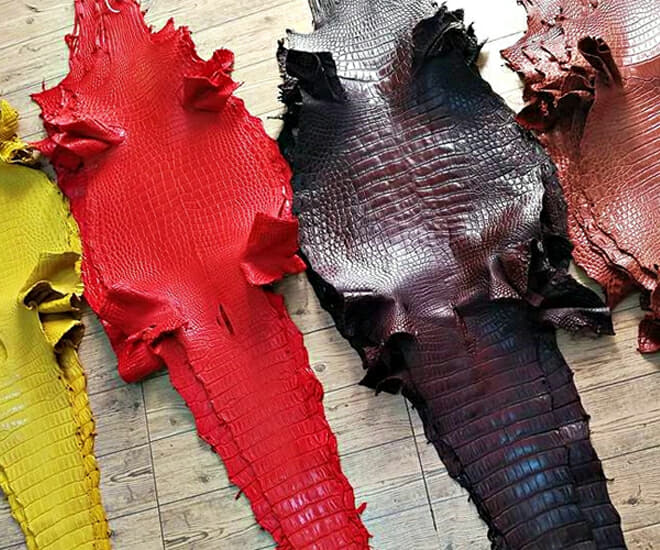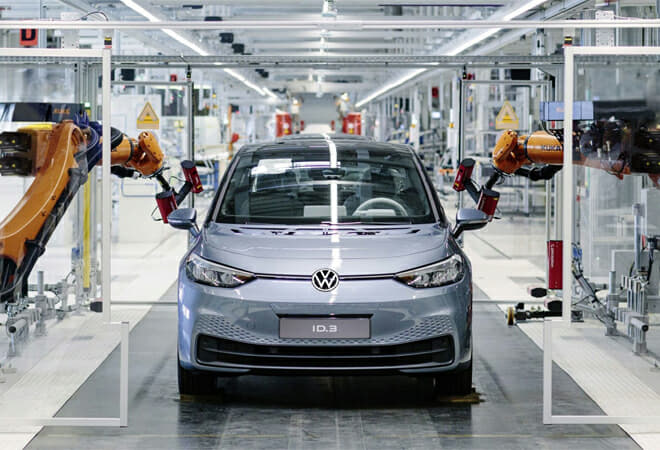Vertically Integrated Businesses Ensures Stability in the Market
Companies like Volkswagen and Hermès adopted vertical integration in their business with the aim of long term benefit and staying competitive.

Most businesses conform to economic theories such as production efficiency and retaining manufacturing profit margins. Companies buy out its external suppliers or make long-term deals as it sees the importance of achieving high-level growth through acquiring external parties. This acquisition reassures companies that production capacity is maximised. Companies such as Volkswagen, Prada and Hermès have incorporated forward and backward vertical integrations for further growth and stability within its own markets. Also, this strategy would help the industry leaders be a frontrunner when competing with the others.
Economies of Scale: Production Efficiency & Quality Control
When luxury companies lower its per-unit fixed cost, “economies of scale” is achieved. This is done through consolidating manpower, optimising operations and eliminating intermediaries where expensive markups tend to be present.
While most fashion companies outsource raw materials to third parties, Hermès go to great lengths and keep the process in-house wherever possible as quality and heritage are of utmost importance for the Maison. A reason why the French luxury leather goods maker pays special attention to securing its fabric supply and material production is to ensure its products are of the highest quality and that prompts the quest for resources worldwide.

For example, back in 2010, Hermès reportedly purchased crocodile farms in Australia so that it has its own standardised source of croc leather. As for the fragrance supply chain, Hermès set up its perfumery labs which could potentially spur innovations and enable it to gain additional know-how. Doing so allows Hermès to pay close attention to details that are fundamental to its success in the luxury market.
Long-term association with partners also enables strict supply chain traceability and tight supply control, which could potentially help the companies to mitigate any potential issues. This gives the buyers confidence in the brand knowing that it is self-sustained even during unfavourable circumstances.

With Prada Group’s acquisition of Car Shoe, a business that creates exclusive driving moccasins, the luxury fashion brand stand to gain expertise in high-performance design, leathers and craftsmanship that Car Shoe is already known for. Furthermore, it aligns with Prada’s business model that goes from the creative process to the sourcing of raw materials, manufacturing and up to distribution. While Prada Group manages its own supply chain, the benefits outweigh the shortfalls.
In essence, a vertically integrated business implies more control over a brand’s supply chain, pricing and improves customer satisfaction. A way that Prada forward integrates its business is through the usage of Sprinklr, a leading customer experience management platform to reach the new generation of luxury customers through modern channels. With this step forward in integrating Sprinklr, Prada Group can study the data provided and fine-tune its advertising objectives to create effective marketing content and reach relevant audiences. This builds a foundation for future growth, creating an effective digital and social media communications strategy for greater consumer interest.
A Change Of Strategy: Anticipating The Future
In the ongoing Covid pandemic, there are shortages in materials like nickel and labour, extreme weather events, war and sanctions have all contributed to the disruptions in the supply chain.
In the ongoing Covid pandemic, the supply chain is under a crunch where shortages in labour and materials abound. Extreme weather events, wars and sanctions have exacerbated the disruption and put even more pressure to the already distressed state of affairs. The timely supply of raw materials and components is crucial for smooth production — profits are also at stakes in the long-run.
For example, many carmakers have taken action to switch up their strategy by securing supplies through vertical integration.

Earlier this year, Tesla confirmed a long-term supply agreement with Vale, one of the largest nickel producers globally, with mines in Brazil, Canada and Indonesia. Aside from the agreement, the electric vehicle company is equally invested in securing its own source of nickle and thus it is actively looking for mines in Indonesia.
Not only Tesla is adopting vertical integration in its business plans, German carmaker Volkswagen (VW) had also signed two memorandums for cobalt and nickel supplies. The first joint venture will be a three-way partnership between VW, Huayou Cobalt and Tsingshan Group for the extraction of these raw materials from Indonesia. The second is for refining sulphates from nickel and cobalt that are needed for battery cathode production.
Employing a multiple sourcing strategy like Tesla and VW, carmakers safeguard its future supply to avoid any potential problems from arising when newer and more advanced technologies are created in the future.
These strategies will be beneficial at improving cost efficiency and shortening the lead time to manufacture cars. Forward integration of car manufacturers is popular for many brands. The usage of distributors around the world could lift the burden off the carmaker’s shoulders of having to deliver the cars to its customers living away from the headquarters.
Building business-to-business relationships is pertinent as carmakers can leverage on the distributors’ wide network and its knowledgement of the regional market for access to a new market of buyers. The time that the products take to reach its customer determines the satisfaction levels and in a time of global disruptions, carmakers are evermore reliant on distributors.
Expanding Business Through Direct Acquisition
Global coffee brand, Starbucks uses a vertically integrated supply chain to surpass its rival, Dunkin’ Donuts. The company is involved in every step of its supply chain process, from the coffee beans to the cup of coffee sold. With this system, Starbucks works directly with its nearly 300,000 coffee growers worldwide. The coffee giant also works with growers as the company is committed to having its suppliers meet quality standards.

After vertically integrating its business plans with plantations, Starbucks also commits to providing its suppliers with special training and education programs. The interaction with growers, along with the company’s sourcing and social responsibility standards allow the suppliers feel they are key players in the corporation.
Having close connections and frequent communication between its suppliers ensure the supply chain is less susceptible to major disruptions in the present or future, such as overplanting or lack of workers. Once supply chain disruptions are kept to the minimal, the market can anticipate steady growth. The Starbucks franchise is ever-growing, adding locations around the world for greater accessibility will allow the company to flourish in the coming years.
How Starbucks forward integrates its business after securing the backward integration process is by working with large retailers like Walmart and 7-11 convenience stores. This makes it easier for coffee lovers to have access to bottled Starbucks coffee, sachets and capsules on the go. Consumers are happy when they find something they want in a short amount of time. The partnerships with third-party businesses and with more physical stores at ideal locations offer a greater reach to consumers. With this expansion, which strengthens the business, it would allow more third-party investors and retailers to be drawn towards Starbucks.
Increased production efficiency and anticipating the future are the main reasons why companies adopt vertical integration in their business model. However, on all the good sides of a vertically integrated business, it is difficult to do so unless the company possesses large resources to execute this strategy.
However, successful vertical integration is a mammoth task to take up and the company needs to have the financial means and determination to see it through. In the short term, the company may incur higher costs from buying other smaller players in the market, but in the long run, the benefits will prove to be a worthwhile investment that will take the company to greater heights.
For more business reads, click here.







